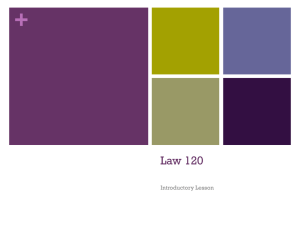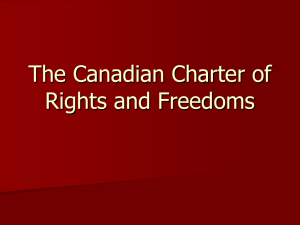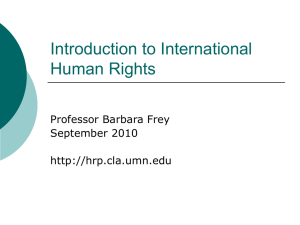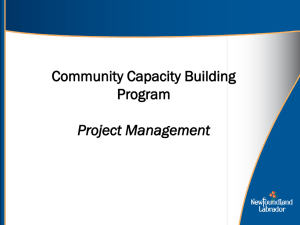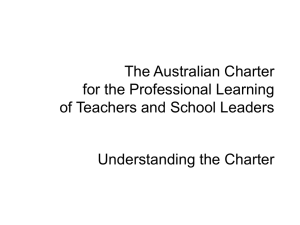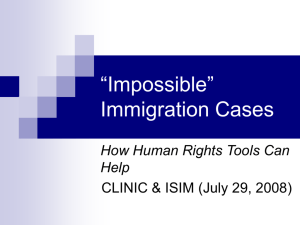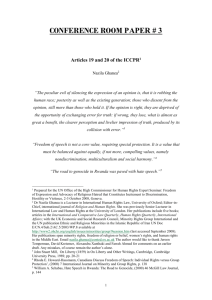Implementation of International Covenants
advertisement
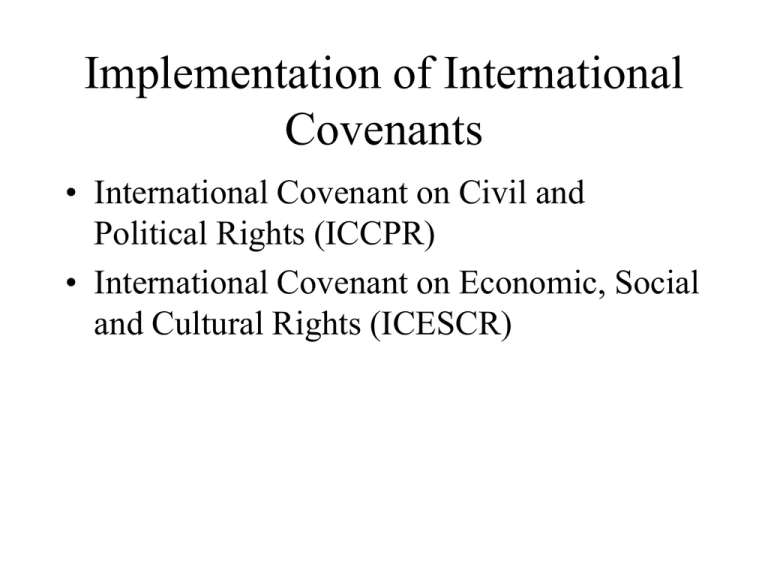
Implementation of International Covenants • International Covenant on Civil and Political Rights (ICCPR) • International Covenant on Economic, Social and Cultural Rights (ICESCR) Reminder of elements of Canadian human rights protection • Anti-discrimination legislation • Employment equity • Canadian Charter of Rights and Freedoms • Focus today on the Charter Subjects today • 1. How Canada has (or has not) implemented ICESCR • 2. How Canada has implemented ICCPR • 3. Possible relevance of the Canadian experience for Taiwan Covenant on Economic, Social and Cultural Rights • Examples of rights protected – Right to employment, including training and economic development (Article 6) – Right to social security (Article 9) – Highest attainable standard of physical and mental health (includingmedical services) Article 12 – Free education at primary level and at all levels over time Article 13 Canadian implementation • Very little done to implement • Challenges hindering implementation – Belief Covenant sets goals rather than concrete legal rights • Article 2 “achieving progressively” • Article 4: Allows limits on rights “for the purpose of promoting the general welfare in a democratic society Further challenges to implementation • Rights stated in broad terms – for example, right to “highest attainable standard of physical and mental health • Rights impose positive obligations on governments and courts reluctant to enforce such obligations Taiwan’s challenge • Covenant is now law – how to implement • Possibilities – Detailed judicial test about what “achieving progressively and “general welfare” mean – Similar to Canadian approach to Charter section 1 – Monitoring by governmental organizations – Monitoring by NGOs International Covenant on Civil and Political Rights • Examples of rights in ICCPR – Freedom of expression – Right to liberty and security of the person – Equal treatment before courts and tribunals, including rights of people charged with offences – Freedom of association, including right to join a trade union – Equality rights Canada’s implementation of the ICCPR • Canada ratified in 1976 • But must take further steps to incorporate into domestic law E.g. Incorporate into statute or constitution Three ways Canada Implemented • 1. Covenant language used in Charter • 2. Review of statutes to find and amend those that violate rights • 3. Court cases using Covenants to interpret the Canadian Charter. Covenant language used in Charter • S. 11: • Any person charged with an offence has the right … (d) to be presumed innocent until proven guilty in a fair and public hearing by an independent and impartial trib • Canadian Charter • Article 14, para 1 …Everyone shall be entitled to a fair and public hearing by a competent, independent and impartial tribunal established by law • para. 2 • Everyone charged with a criminal offence has the right to be presumed innocent until proved guilty according to law • ICCPR Review of statutes to identify violations of new rights • Similar to process now occurring in Taiwan • Did make some useful changes • But generally a failure – many violations overlooked • Very difficult process • Unlikely to catch all violations Court Decisions • Powerful tool in Canada to protect rights • Much more effective than review of statutes. Different effects of Covenants in court cases • To expand a right – Law limiting collective bargaining struck down • To limit a right – Crime of uttering hate propaganda upheld • To limit discrtion of a minister of government – Minister cannot extradite to the U.S. to face the death penalty • To narrow a statute to avoid conflict with a right – Not a crime to use “reasonable force” to discipline a child. Detailed test for “reasonable force” Earlier failure of Canada to protect rights Canadian Bill of Rights • Statute enacted in 1960 with rights much like Charter • Courts interpreted it so narrowly it protected almost no one • Why – Failure of courts to adjust to new role in interpreting rights Courts changed approach with Charter • “It is clear that the meaning [of a Charter of Rights] cannot be determined by recourse to a deictionary nor for that matter, by reference to the rules of statutory interpretation. The task of expounding a constitution is crucially different from that of construing a statute”. Possible relevance of Canadian experience to Taiwan • Mainly experience with ICCPR • Need for judicial education programs • Need for training for police and other officials Possible relevance to Taiwan, continued • Statutory review will not catch all the problems. Need for a backup – Court cases one possibility – If so, need for legal assistance • Consider not only covenants but other international documents, even ones Taiwan has not adopted.

